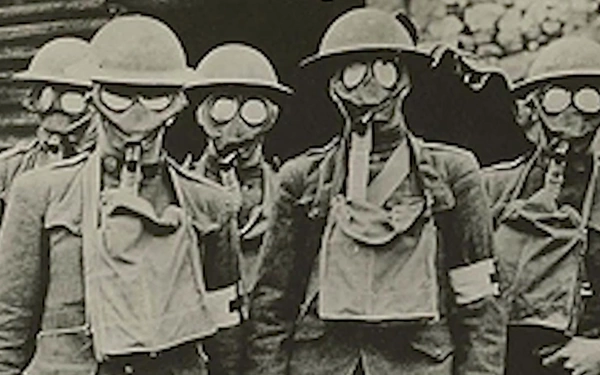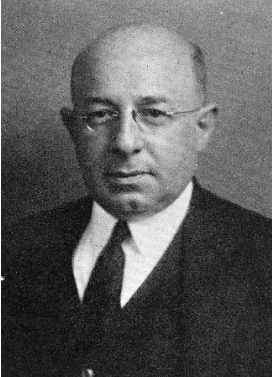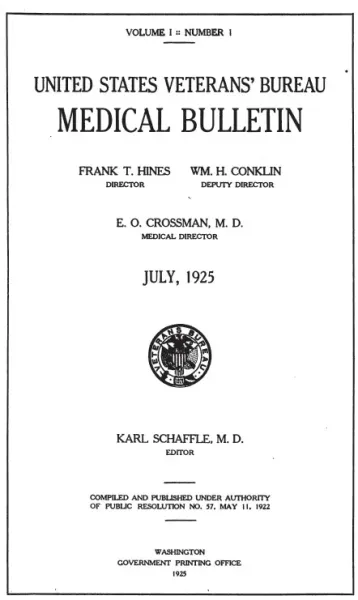Dr. Philip Matz: A Pioneer in VA Medical Research
Published: 12 March 2025
By Katie Rories, Historian, Veterans Health Administration
via the U.S. Department of Veterrans Affairs website

061-GIs-gas
Dr. Philip Matz partnered with Army Dr. H.L. Gilchrist on a landmark study on the impacts of poison gas. (Department of Defense)

Dr. Philip Matz served as the first director of research at VA from 1925-1938. His leadership kickstarted Veteran specific studies on a wide range of issues. (VA)
World War I brought about new types of injuries caused by modern, mechanized warfare, such as those from machine guns, poison gas and heavy artillery. At the same time, it acted as a driving force for advancements in medical practices, public health and the professionalization of research methodologies. Following the war, with a dramatic increase in the number of Veterans—roughly 150,000 more than before—there was a growing recognition of the need for medical research to improve care for these individuals.
In 1923 President Warren G. Harding and the Veterans Bureau’s first administrator, Charles Forbes, created a medical council to survey the state of Veteran care and propose a modern hospital network. The following year, the council made key recommendations, including the creation of a research program, the appointment of a director of research, and the publication of a medical bulletin. The council emphasized the need for statistical studies, standardized procedures, and clinical research focused on conditions affecting Veterans. The idea of integrating research approaches into Veteran hospital systems was adapted from practices already in place at U.S. Public Health Service Hospitals, 50 of which the Bureau absorbed into its new hospital network.
To lead this major research expansion, the Bureau looked to Dr. Philip Matz, who was appointed as director of research in September 1925. Matz, a Baltimore-born pathologist, graduated from the Long Island College of Medicine in 1908. He began his career as a laboratory chief at the Leavenworth Branch of the National Home for Disabled Volunteer Soldiers. During World War I, he served as chief of the laboratory service at the Camp Travis, Texas, base hospital. After the war, he continued his laboratory work with the Public Health Service.

Title page of the inaugural issue of The United States Veterans’ Bureau Medical Bulletin, published in July 1925. (Google Books)
In his new role at the Veterans Bureau, Matz directed clinical research in hospitals and outpatient facilities, ensuring that studies directly contributed to improving Veteran treatment. Matz also oversaw the creation of three laboratory research centers at hospitals in Palo Alto, California; Washington, D.C.; and Maywood, Illinois, in early 1926.
He also played a crucial role in publishing the Medical Bulletin, a monthly medical journal featuring articles from Bureau physicians and staff designed to share case studies, promising treatments and other reports based on their extensive experience with patients in Veterans’ hospitals.
Beyond his administrative duties, Matz conducted research himself. In 1926, he analyzed cardiovascular disease, tuberculosis, cancer, and neuropsychiatric conditions among Veterans, comparing their rates to civilian populations. His work contributed to landmark publications, including a New England Journal of Medicine study on cardiovascular disease incidence in Veterans and a 1938 Journal of the American Medical Association report revealing that 50 percent of Veterans suffered from neuropsychiatric disorders.
In perhaps his most widely known study, Matz collaborated with Dr. H.L. Gilchrist, medical director of the Army’s Chemical Warfare Service, to study Veterans exposed to poison gas during World War I. Their research identified chronic bronchitis with asthma-like symptoms as a common aftereffect but found no increased risk of tuberculosis among those exposed, contrary to what some physicians perceived at the time.
Underscoring his work, Dr. Matz believed that Veteran medical research should have a direct impact on patient care.
→ Read the entire article on the VA website.
External Web Site Notice: This page contains information directly presented from an external source. The terms and conditions of this page may not be the same as those of this website. Click here to read the full disclaimer notice for external web sites. Thank you.



